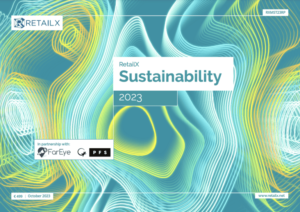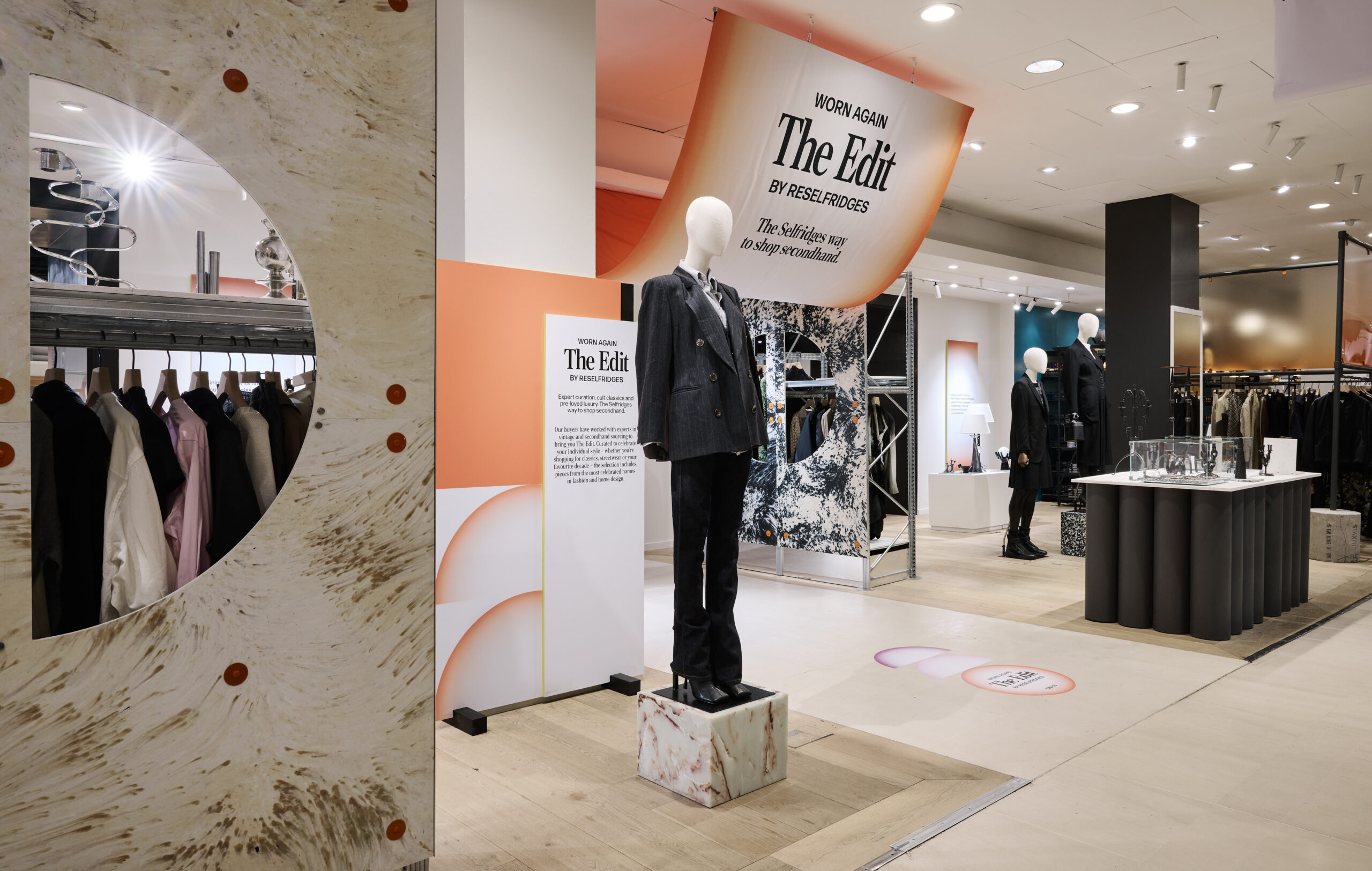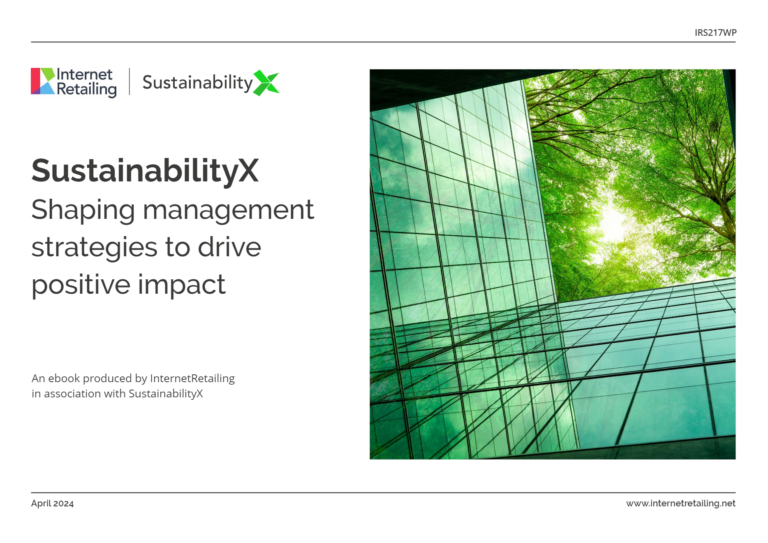The new RetailX Sustainability 2023 report has stressed that with resale becoming normalised for consumers, retailers and brands looking to add a resale revenue stream to their business have decisions to make.
The retail industry is becoming increasingly circular in its use of materials and taking back products, when consumers no longer want them, as well as in the way that items are sold. The growing movement is predicted to benefit not just the environment and society but a company’s bottom line as well.
In the fashion industry alone, circular sales practices such as rental and resale have the potential to take 23% of the global market by 2030, a figure representing revenue of $700bn. The luxury resale market has been predicted to grow five times faster than the luxury market as a whole between 2020 and 2025.
Buying secondhand has become mainstream, especially among younger fashion shoppers in the UK, France, Germany and the US. Gen Z consumers are conscious of price when buying fashion and this extends beyond their credit card to concerns about the environment, brands’ working practices and supply chains. This poses a two-pronged challenge for fast fashion companies that are having to change due to environmental factors as well as increased competition from low-cost competitors from China selling globally via mobile apps.
There is a secondhand market in China as well. Only around 15% of fashion shoppers in the country say they have purchased secondhand clothing, but a further 40% are keen to try, according to the RetailX Global Fashion report.

New revenue streams
Historically, the resale of products has been the premise of consumer-to-consumer and third party marketplaces such as eBay, Vinted, ThredUp, Depop, Vestiaire Collective and Alibaba’s Idle Fish. In 2021 and 2022, 25 million items were resold on the Depop platform alone, giving products a second life while enabling tens of thousands of people to make an income from circular fashion.
With these pressures on fashion brands, it is understandable that they want to open new revenue streams and take ownership of at least the part of the secondhand market around their own labels. Zara has been a pioneer in this field. The Spanish company tested the resale of pre-owned fashion on its core ecommerce site in the UK and has since expanded it to its site in France. Spain and Germany will follow.
Zara Pre-owned features on the top navigation from where consumers can choose to buy, sell or donate clothing as well as access repair services from the brand’s network of third party workshops. As the company tells consumers, “the most sustainable garments are the ones you already own.”
Zara’s Resell Corner enables customers to list for sale any Zara garment they no longer want. A product description is required outlining any blemishes and this is uploaded along with images of the actual garment rather than stock images from Zara. Every listing on the peer-to-peer platform is reviewed by Zara to ensure that the garment description matches the five or six images posted. Zara handles the payment by forwarding it on to the seller once the buyer is happy with their purchase. Zara customer services also handle any dispute between buyer and seller.
Meanwhile, H&M has already seen an 85% increase in revenue from its resale partnership with Sellpy and is targeting €90m in resale revenue in 2023.
Luxury
Luxury brands are embracing resale as well but the majority of sales of secondhand luxury items are still via platforms such as Vestiaire Collective.
Luxury watch maker Rolex closely controls its secondhand market through a certification programme officially vouching for pre-owned Rolex watches when they are bought from a jewellery store that has joined its official scheme. The guarantee of authenticity that is issued in the form of a seal attached to a secondhand watch attests to its authenticity on the date of purchase as well as providing a two-year international guarantee. It also shows that the watch is working properly.
Retailers
Retailers that are known for selling in the luxury space are also joining the resale revolution. Prestige department stores such as London’s Harvey Nichols and Selfridges are currently embracing resale in store.
Pureplayer Net-a-Porter has partnered with resale technology provider Reflaunt. Here, the price of items offered for sale are decided by a pricing algorithm that “takes into consideration market trends, demand and the item’s condition,” states the site. A ‘Smart Pricing’ option will reduce the price of listed items automatically by 20% every 45 days a maximum of three times.
Net-a-Porter customers can have the item collected from their home, with the retailer handling photography and product listing. In return, the customer receives money once the item is sold, minus a commission. They can opt to receive an extra 10% of the selling price if the total amount is taken as credit against future purchases on Neta-Porter. Since launching a trial in 2021, Net-a-Porter has expanded its resale offering for customers in Italy, France, the US, Hong Kong, Germany, Australia, South Korea and the Middle East. It is also available to customers of its Mr Porter and The Outnet sites.
Resale is just one service among Selfridges’ circular operation. Reselfridges, as the department store calls its ecosystem of circular products and services, brings together resale, rental, repair, refill and recycling across its online and bricks-and-mortar channels. The company has an ambitious target that 45% of transactions will come from Reselfridges by 2030.
Business considerations
With resale becoming normalised for consumers, retailers and brands looking to add a resale revenue stream to their business have decisions to make. Do they operate the service in-house, in partnership or through acquisition? As Rolex demonstrates, it also requires consideration of product authentication and quality control, while Net-a-Porter highlights different pricing models for retailers and consumers.
How does the service fit in with expectations of the individual business’s customer base and should items be resold on the core ecommerce site, under a separate URL or via existing third party platforms? Communication between brand and seller and between buyer and seller also need to be managed to ensure that any service remains on brand and doesn’t damage existing brand reputation and customer trust.
With resale taking up an ever larger share of the overall product market, retailers and brands will also have to carefully consider how they control supply and demand if they want to predict revenue levels. Adding product rental to the circular service mix will enable more consistent product availability, while the increasing use of recycled, reengineered or ethical materials in product design will give conscious consumers assurance to buy new.

This feature was authored by Emma Herrod and originally appeared in the RetailX Sustainability 2023 report. Download it in full to discover why the RetailX Global Elite 250 are sharing their sustainability journeys with customers, and how consumers are shopping with sustainability in mind.
Also pre-register to view the Ecommerce World Review webinar which sees an expert panel discuss the report.








